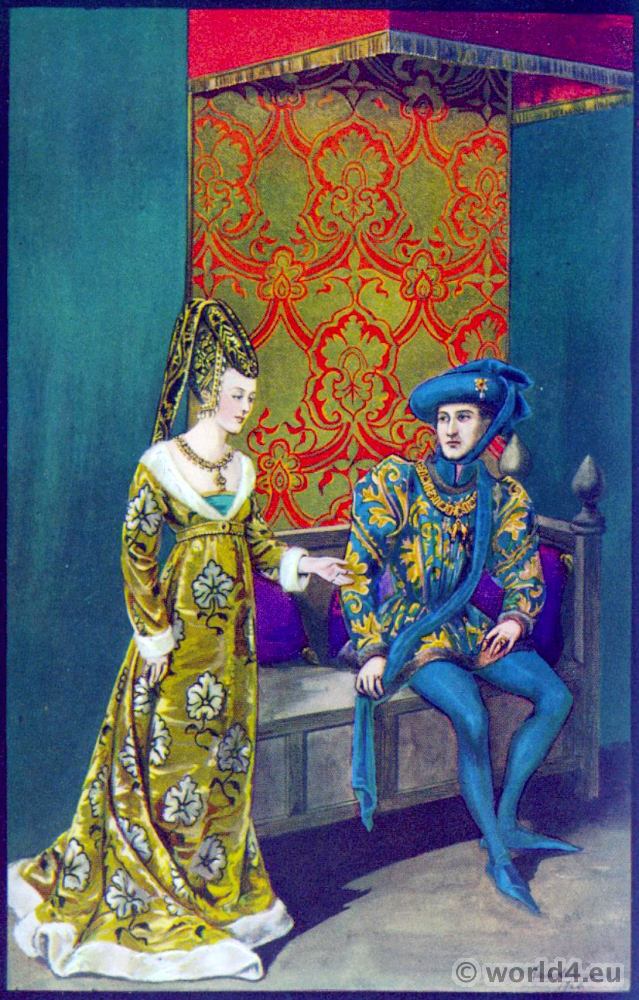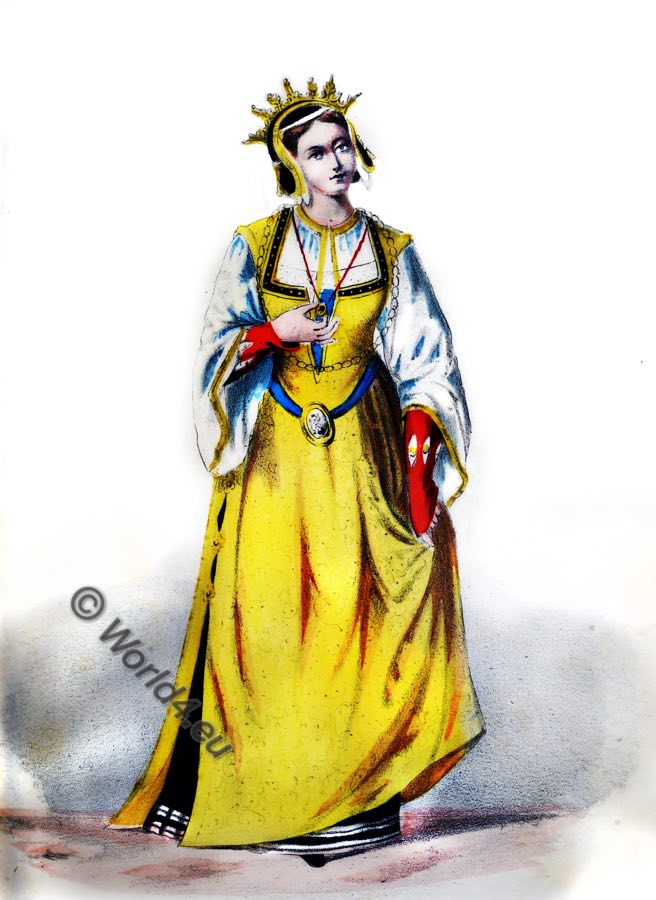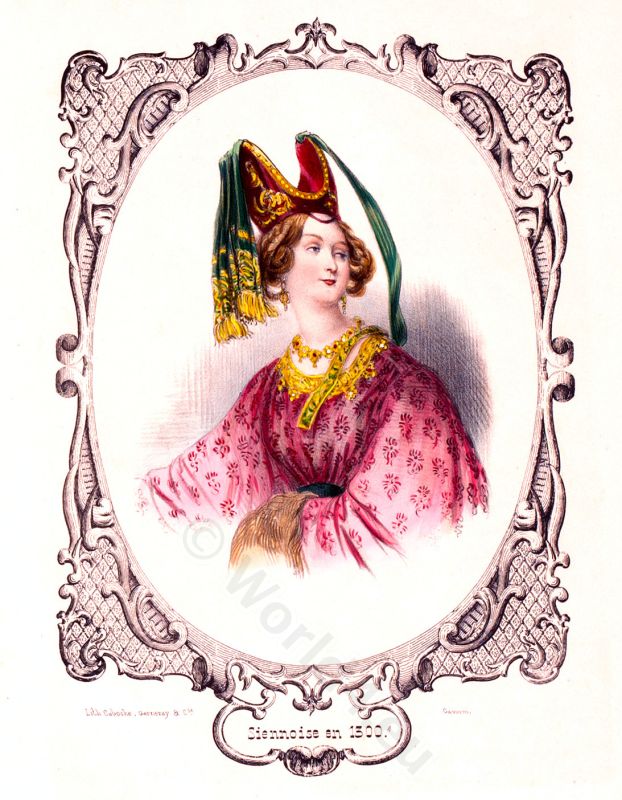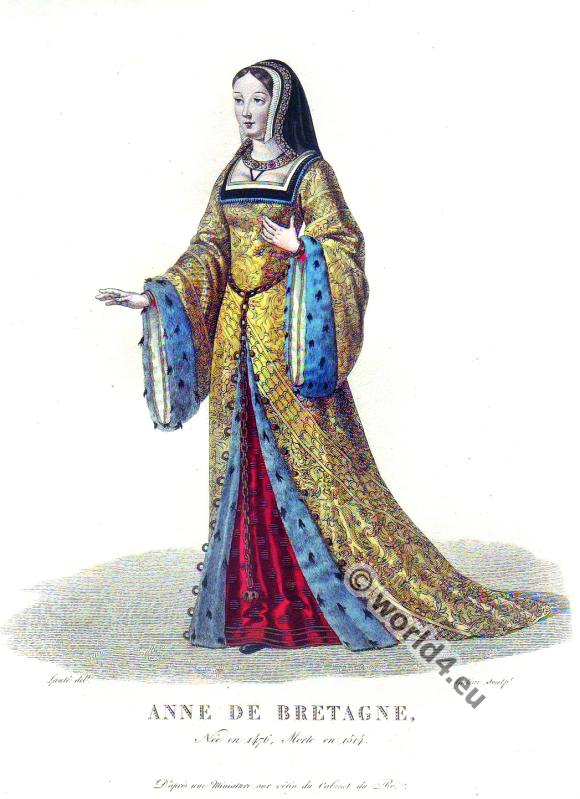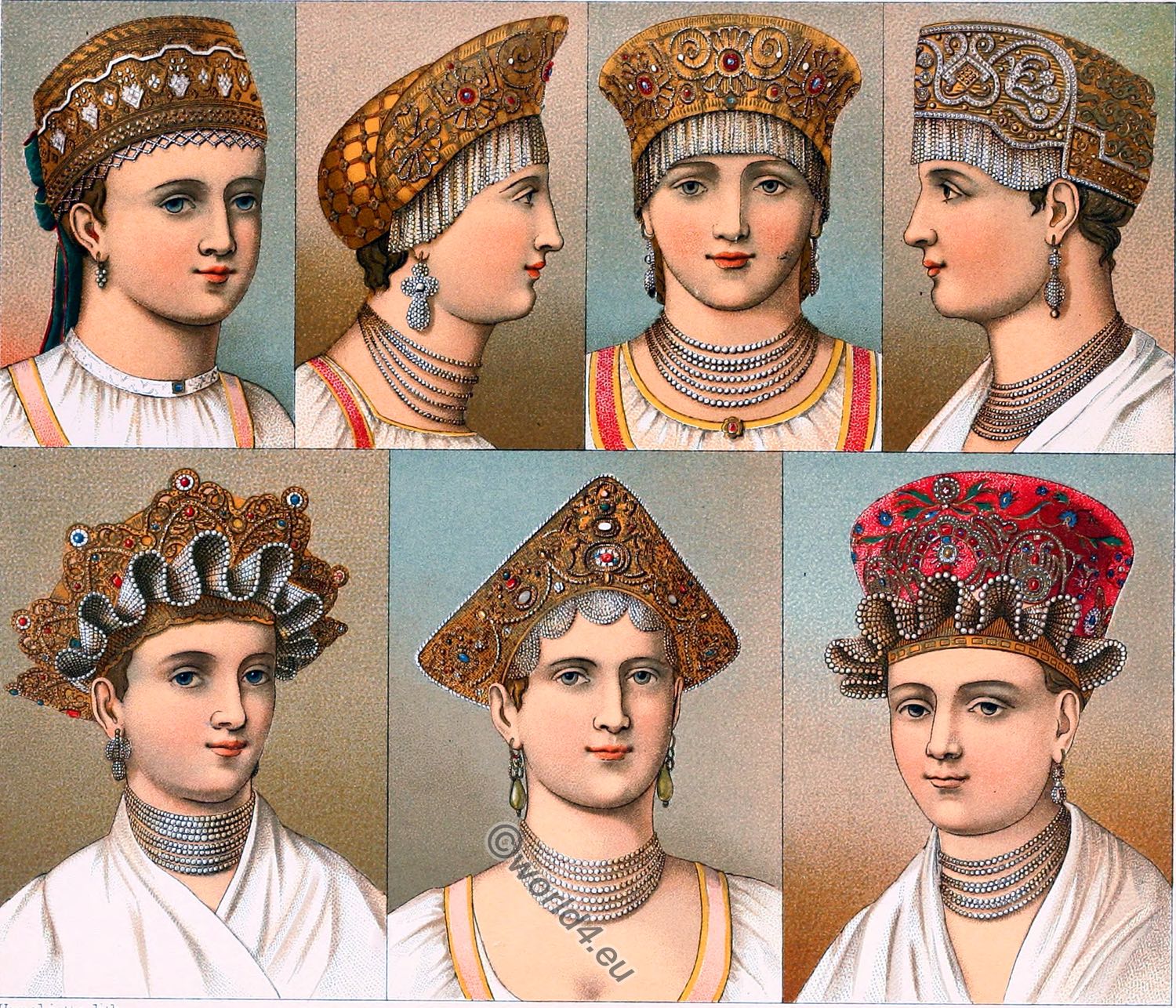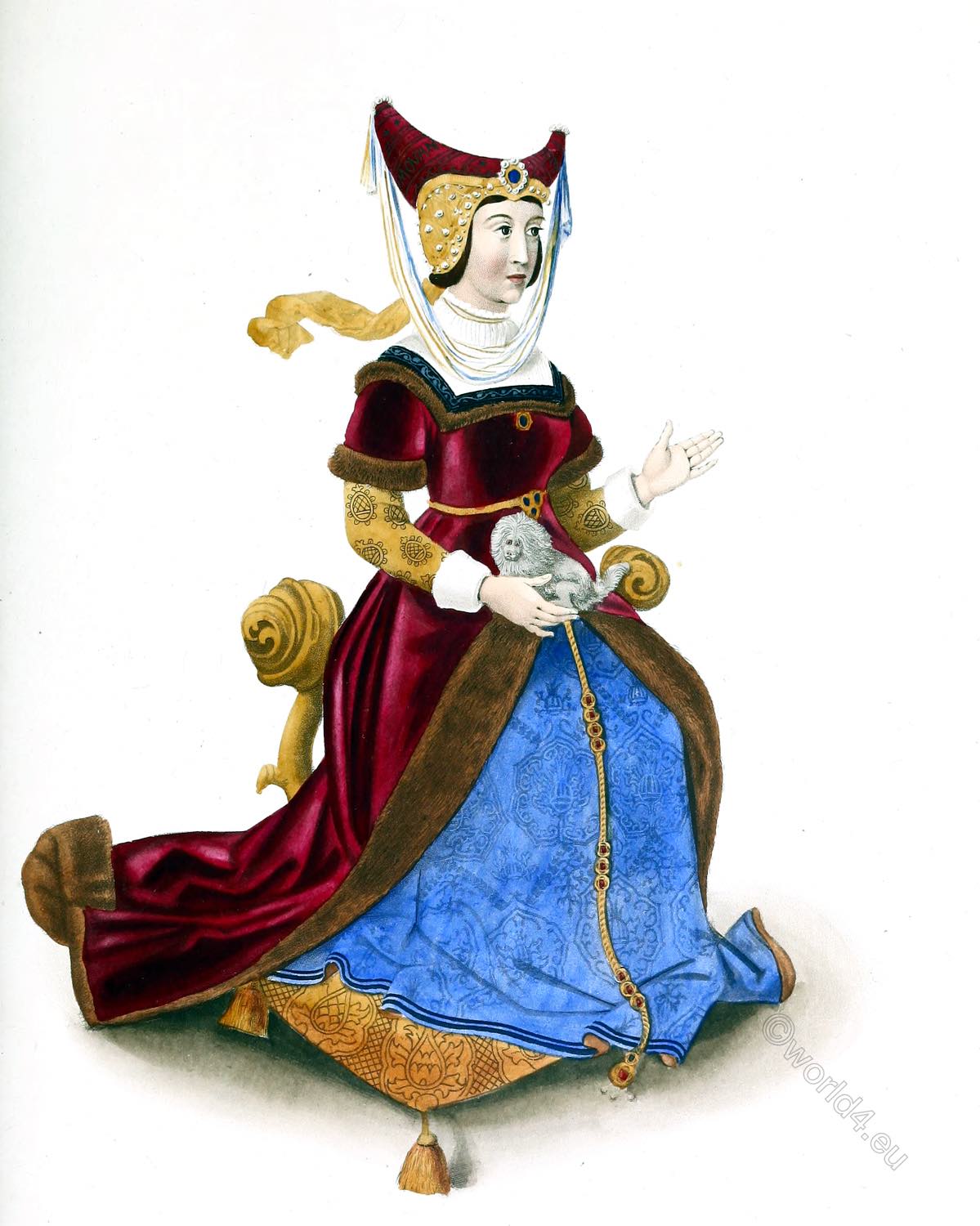
Constance of Castile the second wife of John of Gaunt Duke of Lancaster with horned head-dress.
Constance de Castilla, Duchess of Lancaster (Castrojeriz, Burgos, July 1354 – Leicester Castle, 24 March 1394). Infanta of Castile and second daughter of Peter I the Cruel, King of Castile, and Maria de Padilla. Constance of Castile was a pretender to the throne of Castile and Leon and by marriage Duchess of Lancaster. In 1378, Constance was admitted to the Order of the Garter as Lady of the Garter.
She is the protagonist of the romantic poet William Sotheby’s epic in ten cantos, Constance de Castile (London, 1810). She was portrayed many years after her death by the painter Antonio de Holanda in his Genealogia dos Reis de Portugal.
CONSTANCE DUCHESS OF LANCASTER, WIFE OF JOHN OF GAUNT
by Henry Shaw.
AMONG the most beautiful specimens of illuminated manuscripts preserved in the British Museum, is the one from which the present plate is taken, and which is considered so precious that the leaves have been separately mounted and covered with glass to save them from the common accidents to which such articles are exposed. It was purchased recently of Mr. Newton Scott, one of the attaches to the embassy at Madrid, who bought it there.
It is a richly illuminated genealogy relating to the regal house of Portugal, and appears to have been executed about the time of the Emperor Maximilian, for a member of the royal family of that country, who, there is reason for believing, was the Infante Fernando, born in 1507, who died in 1534. It is certainly the work of Flemish artists.
The figure given on our plate is intended to represent Constance, the second wife of John of Gaunt Duke of Lancaster. The horned head-dress, and other parts of her costume, are hardly that of the period at which it was painted, but were perhaps copied from an older picture. Over the lady’s head, in the original, is a scroll, bearing the inscription,- Duquesta Dona Constanca de Jigraterra.
The first wife of John of Gaunt was, as is well known, Blanche Plantagenet, the great heiress of the duchy of Lancaster, which he inherited through her. After her death, he espoused Constance, elder daughter and co-heiress of Peter king of Castile, in whose right he assumed the title of King of Castile and Leon, and was summoned to parliament by that title.
In the reign of Richard II. he conceived the idea of possessing himself by force of his distant kingdom, and invaded Spain with a fine army. At Compostello, he was met by John king of Portugal, and married his daughter Philippa (by his first wife) to that monarch.
From Compostella he marched into Castile; but he soon laid aside his projects of conquest, and he concluded a treaty of peace with the prince who occupied the throne he claimed. By this treaty the duke of Lancaster abandoned all his claim to the Spanish crown, in consideration of a large sum of money, and the further condition that Henry prince of the Asturias should marry his only daughter by his wife Constance, the lady Catherine.
Thus two of the daughters of John of Gaunt became queens; and a few years afterwards his son Henry of Bolingbroke ascended the throne of EnglandasHenryIV. After the death of Constance, the duke of Lancaster made another and lowlier marriage, his third wife being Catherine de Swynford, widow of Sir Otho de Swynford, and daughter of Sir Payn Roet or Green, king at arms.

The cut on the preceding page, representing a house of the fifteenth century, is taken from one of the paintings in the Traité des Tournois of King Rene, which has furnished two plates to the present work. The banners and blazons of the chief lords of the tournament are displayed at the windows of their lodgings.
Our initial letter is taken from an illuminated missal, in the possession of F. A. Beck, Esq.
Source: Dresses and Decorations of the Middle Ages from the seventh to the seventeenth centuries by Henry Shaw F.S.A. Published: London William Pickering 1843.
Related
Discover more from World4 Costume Culture History
Subscribe to get the latest posts sent to your email.


